Homepage → Gardening Related Topics → Beer Traps for Slug Control
Beer Traps for Slug Control
Planted July 27, 2001
Last tended to on October 13, 2024
Reading time: 4 minutes

by Mike Dunton
Slugs and snails in the garden are a continual challenge for us here in the damp, Maritime Northwest. They are especially a problem in the spring after mild winters.
Since we garden organically, we do not use chemical controls. Trapping slugs using beer is not an old wives tale. It is one of the most powerful anti-slug weapons in our gardening arsenal; one that we have successfully deployed for decades.
Materials Needed:
- Any number of plastic containers that you can rescue from being sent to the landfill.
- Beer. Really cheap beer. I would not dare to list brand names but I can tell you that I just watch for sales of those mega-brands that are sold in “suitcases” of 24-plus cans.
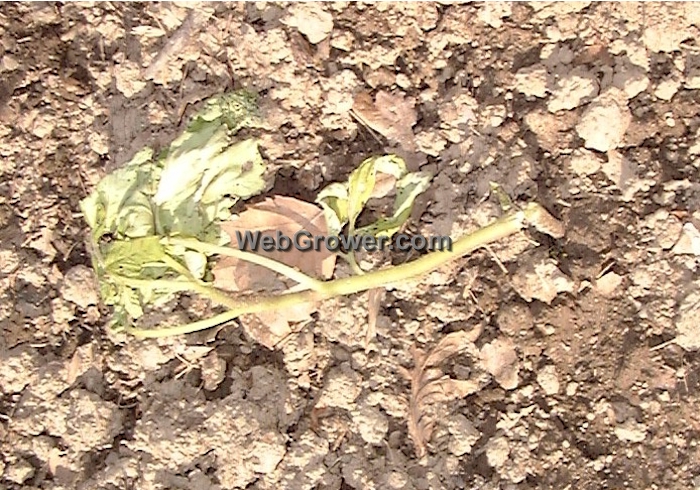
The picture to the above is what can happen to a newly transplanted tomato seedling in our fields in just one evening. For obvious reasons, this cannot be allowed to happen.
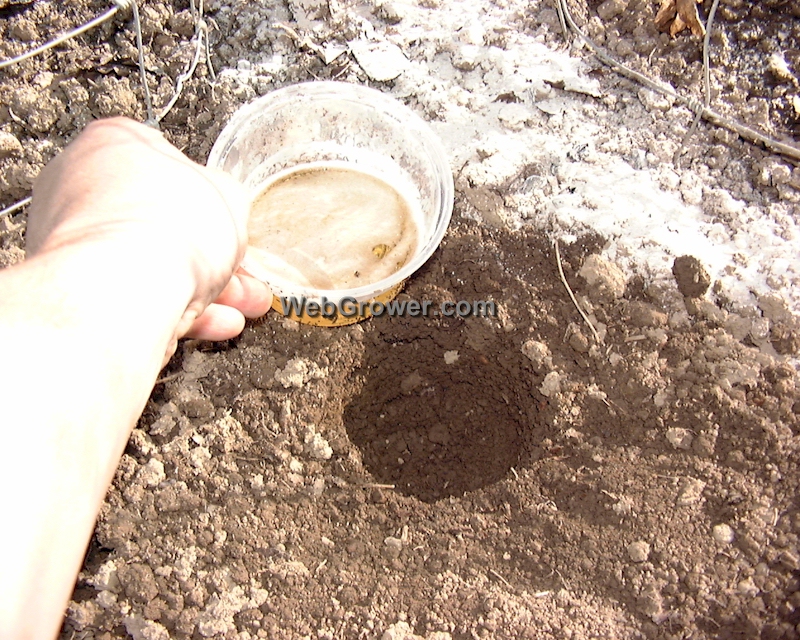
That is where beer traps come in. I could not possibly tell you where I learned about them. I have been using beer traps for decades. It could have been some organic gardening book I read as a kid. It may have even been a gardening friend or family member. Regardless, the slugs in my garden prefer beer over plant seedlings, so that is what I give them.
Beer traps are cheap, simple, and easy to set up. You can use just about any type of old food containers. The plastic kind that most people throw away are perfect. Since I use so many for various purposes, I have friends and family save containers for me.
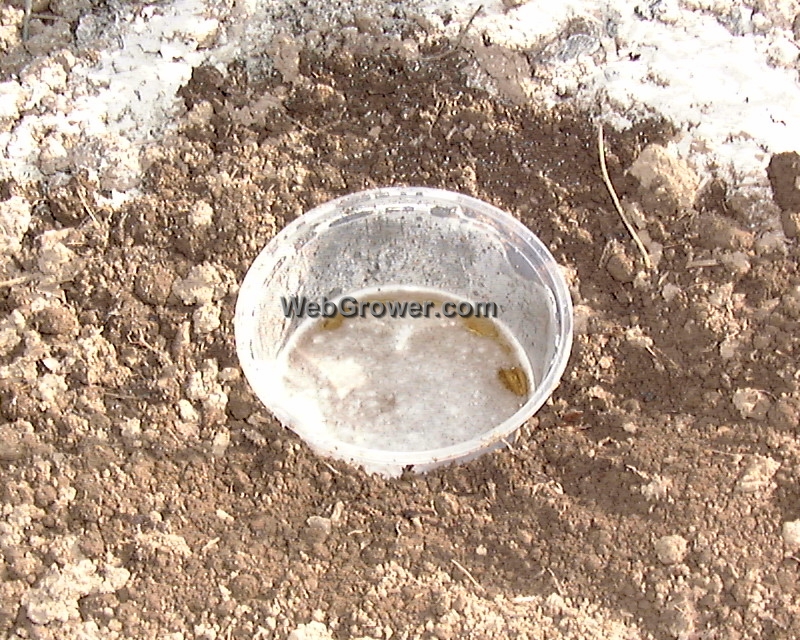
The container used in the pictures for this article is a salvaged food container such as the type that salsa or cottage cheese come in. Use your imagination. Almost anything will work - even the small trays that frozen meals come in.
The first step is to create a depression in the soil that will accept the container that you have. It is then filled with about one inch of beer and placed in the ground near the seedlings you need to protect. For a good coverage, we typically place traps about every eight to ten feet.
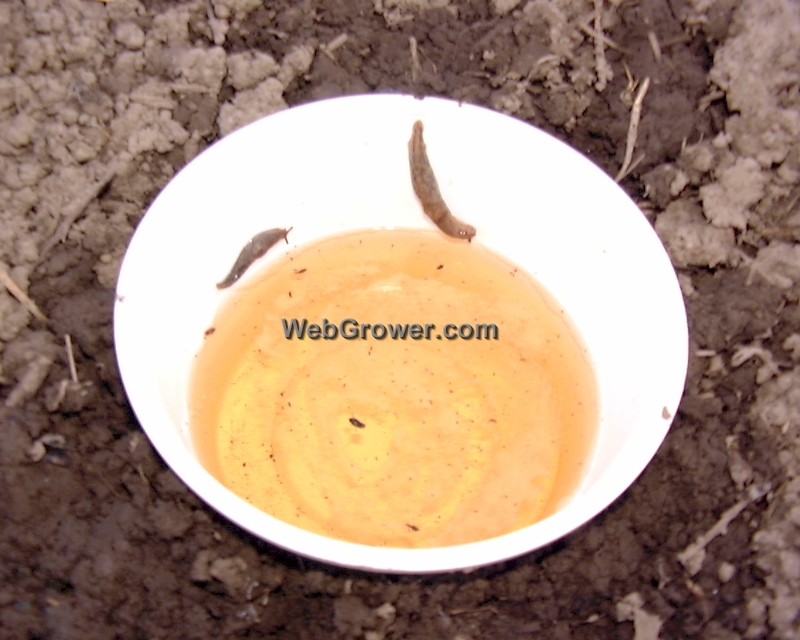
Within no time, as seen in the picture to the above, the slugs come out of hiding drawn to the scent. I have read that it is the yeast that attracts them. It attracts them so strongly that they get into the liquid and drown.
I have not yet experimented, but I suspect that mixing up yeast in water would work in place of the beer. This is something to try in the future. But since I know that beer works, and since I never seem to have the time at planting time (or the plants to sacrifice to a failed experiment), I have stuck with beer.
As mentioned above, there are some years when the slug populations are extremely high and extreme measures are therefore called for. And if you have picked up on the not so subtle martial tone to this prose, you are not mistaken. There are years when it has been all out war; the us versus them kind of war. (I am sorry if I have offended any slug lovers out there. If you wish to organize and operate a rescue and relocation program, send me your proposal.)
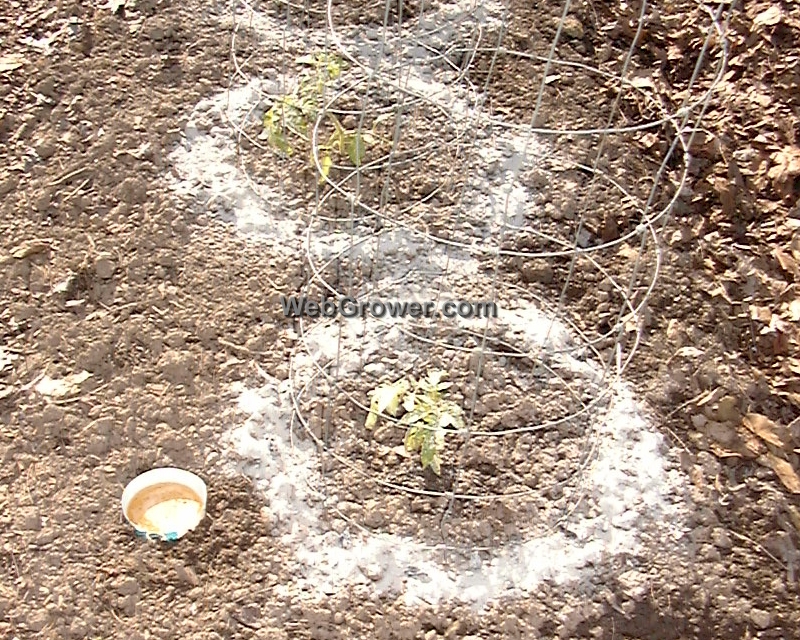
But I draw my lines, quite literally as seen in this above image, and throw everything I can at them. Along with the beer slug traps, I save the wood ashes from our furnace and encircle the plants as another line of defense. They do not like crossing them and it works as a barrier for as long as the ashes remain dry.
I have also been know to head out after dark with a flashlight and sharp pruning shears and engage them in one-on-one, personal, hand-to-hand combat. I continue making rounds several times during the night during the crucial time between transplanting and the point that the plants become established.
It is then, after the plants are toughened up and growing, that I can relax my stance, extend the olive branch, and draw a cautious truce with the slugs. Yes, we are destined to fight once again the following spring but it is at this point in the season when I go ahead and gather up all of the containers. I throw them into a bucket of water to soak for a few days before rinsing and stowing them away for next year.
It seems that once the plants are off to a healthy start, the slugs are no longer a threat and can be left alone to do their job of breaking down plant and other rotting matter thereby enriching the soil. (Like every living thing on the planet, they do have a purpose.)
Mike Dunton is an "heirloom seed pioneer" who founded, and is the former owner of, the Victory Seed Company. As a seed professional, biodiversity preservationist, horticultural historian, technologist, farmer, gardener, homesteader, writer, and educator, he has worked for decades to share the knowledge and experience that he has gained over a lifetime of trial and error. He strives to pass down his passion for incorporating old-timey skills into our everyday, modern lives.
Copyright © 1998 - 2024 - All rights reserved
WebGrower.com℠ is a service mark of Victory Horticultural Group, LLC.
• Privacy Statement •
This site participates in the Amazon Services LLC Associates Program, an affiliate advertising program designed to provide a means for sites to earn advertising fees by advertising and linking to amazon.com.